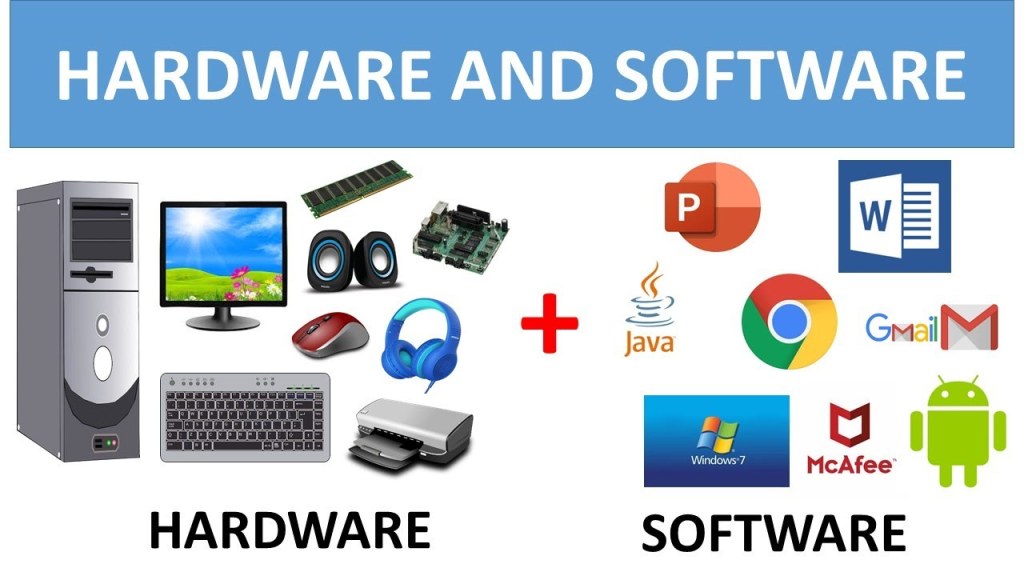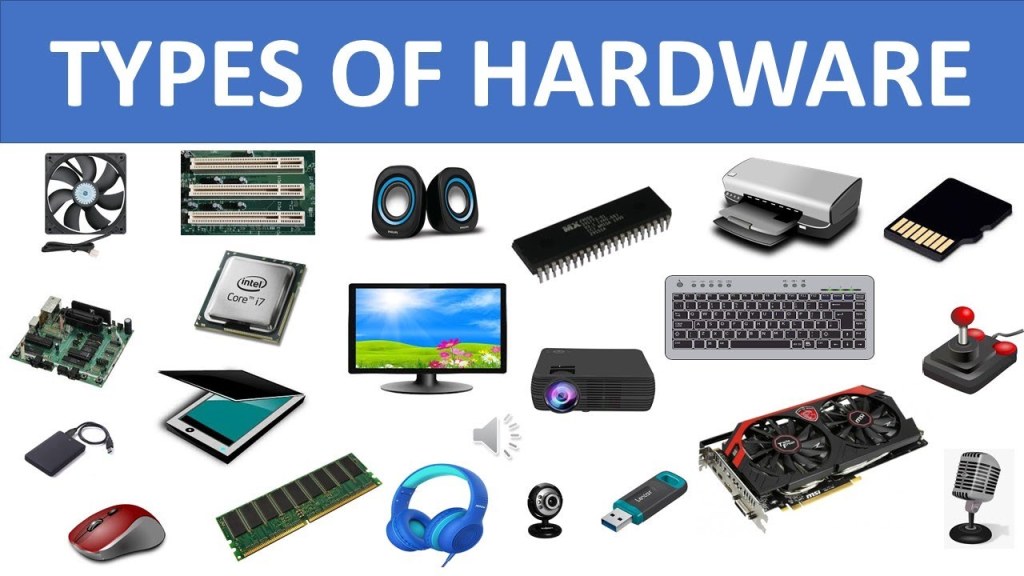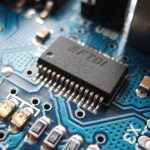Explore The Power Of Five Examples Of Computer Hardware: Unleash Your Tech Potential!
Five Examples of Computer Hardware
Introduction
Hello Readers,
Welcome to this informative article where we will explore five examples of computer hardware. As technology continues to advance, understanding the different components that make up a computer system becomes increasingly important. Whether you are a tech enthusiast, a student, or simply curious about how computers work, this article will provide you with valuable insights into the world of computer hardware.
3 Picture Gallery: Explore The Power Of Five Examples Of Computer Hardware: Unleash Your Tech Potential!



In this article, we will discuss the top five examples of computer hardware, their functions, advantages, and disadvantages. By the end of this article, you will have a comprehensive understanding of the different types of computer hardware and their role in shaping our digital world.
The Five Examples of Computer Hardware
1. Central Processing Unit (CPU) 💻
The Central Processing Unit, or CPU, is often referred to as the brain of the computer. It is responsible for executing instructions and performing calculations that drive the computer’s operations. The CPU is composed of various components, including the control unit, arithmetic logic unit, and cache memory. Its speed and performance significantly impact the overall efficiency of a computer system.
2. Random Access Memory (RAM) 🎯
Random Access Memory, or RAM, is a type of computer memory that stores data that is currently being used. Unlike permanent storage such as hard drives, RAM is volatile and resets when the computer is turned off. It functions as a temporary workspace for the CPU, allowing it to quickly access and manipulate data. The amount of RAM in a computer affects its multitasking capabilities and overall performance.
3. Hard Disk Drive (HDD) 💾

Image Source: ytimg.com
The Hard Disk Drive, or HDD, is the primary storage device in most computers. It stores and retrieves data on a magnetic disk using a mechanical arm that moves across the disk’s surface. HDDs provide large storage capacities at relatively low costs, making them ideal for storing files, applications, and operating systems. However, they are slower compared to Solid State Drives (SSDs) and can be prone to mechanical failures.
4. Graphics Processing Unit (GPU) 🔥
The Graphics Processing Unit, or GPU, is responsible for rendering images, videos, and animations on a computer screen. Originally designed for gaming, GPUs have evolved to handle complex graphical computations required by various applications, including video editing and machine learning. They significantly enhance the visual experience and processing power of modern computers.
5. Motherboard 💻
The motherboard is the main circuit board of a computer and connects all the components together. It provides the electrical connections and pathways necessary for data transfer between the CPU, RAM, storage devices, and other peripherals. The motherboard also houses essential components such as the BIOS (Basic Input/Output System) and expansion slots for additional hardware.
What, Who, When, Where, Why, and How of Computer Hardware
What is Computer Hardware?
Computer hardware refers to the physical components that make up a computer system. It encompasses devices such as the CPU, RAM, hard drives, and peripherals like keyboards and mice. These components work together to enable the functioning of a computer and the execution of various tasks.
Who Uses Computer Hardware?
Computer hardware is used by individuals, businesses, and organizations worldwide. It is an integral part of our daily lives, from personal computers and laptops to servers and supercomputers used in research and scientific calculations. Anyone who utilizes electronic devices that rely on computer systems is using computer hardware.
When Was Computer Hardware Invented?

Image Source: computerinfobits.com
The development of computer hardware dates back to the mid-20th century. Early computers used vacuum tubes and punched cards for processing and storage. Over time, advancements in technology led to the invention of transistors, integrated circuits, and microprocessors, revolutionizing the field of computer hardware.
Where Can Computer Hardware be Found?
Computer hardware can be found in various settings, including homes, offices, schools, and data centers. It is present in laptops, desktop computers, servers, smartphones, gaming consoles, and other electronic devices. Computer hardware is an essential component of modern technology infrastructure.
Why is Computer Hardware Important?
Computer hardware is crucial as it enables the execution of software applications and the performance of tasks. It provides the necessary processing power, storage, and connectivity for computers to function effectively. Without computer hardware, the digital world as we know it would not exist.
How Does Computer Hardware Work?
Computer hardware works by utilizing electrical signals to process and store data. The CPU, as the central component, carries out instructions and calculations. Data is temporarily stored in RAM for quick access, while long-term storage is provided by devices such as hard drives or solid-state drives. The motherboard acts as the central hub, ensuring proper communication and coordination between the various hardware components.
Advantages and Disadvantages of Computer Hardware
Advantages of Computer Hardware
– Increased processing power and speed, enabling faster task execution.
– Large storage capacities for files, applications, and data.
– Enhanced graphics capabilities for visual-intensive tasks.
– Improved multitasking capabilities, allowing for efficient workflow.
– Connectivity options for various peripherals and devices.
Disadvantages of Computer Hardware

Image Source: ytimg.com
– Potential for hardware failures and malfunctions.
– High costs associated with advanced hardware components.
– Limited portability due to the size and weight of desktop computer systems.
– Environmental impact due to the disposal of outdated hardware.
– Rapid technological advancements leading to frequent hardware upgrades.
Frequently Asked Questions (FAQs)
1. Can I upgrade the hardware in my computer?
Yes, in most cases, computer hardware can be upgraded. Components such as RAM, hard drives, and graphics cards can be replaced with newer and more powerful versions to enhance performance.
2. How long does computer hardware typically last?
The lifespan of computer hardware varies depending on factors such as usage, quality, and technological advancements. On average, a computer system can be expected to last around 3 to 5 years before requiring significant upgrades or replacements.
3. What are the essential components of a computer system?
The essential components of a computer system include the CPU, RAM, storage devices, motherboard, power supply, and input/output devices such as a keyboard and mouse.
4. Are solid-state drives better than hard disk drives?
Solid-state drives (SSDs) offer faster data access and transfer speeds compared to hard disk drives (HDDs). However, HDDs provide larger storage capacities at a lower cost per gigabyte. The choice between the two depends on the specific needs and priorities of the user.
5. Can computer hardware be recycled?
Yes, computer hardware can be recycled. Various organizations and recycling centers accept old and obsolete hardware for appropriate disposal or refurbishment. Recycling helps reduce electronic waste and promotes environmentally friendly practices.
Conclusion
In conclusion, understanding the different examples of computer hardware is essential for anyone interested in technology and its impact on our lives. The CPU, RAM, HDD, GPU, and motherboard play crucial roles in the functioning of a computer system.
By grasping the advantages and disadvantages of computer hardware, individuals can make informed decisions when purchasing or upgrading their computer systems.
Remember to consider factors such as processing power, storage capacity, graphics capabilities, and connectivity options to meet your specific needs.
Thank you for joining us on this journey through the world of computer hardware. Stay curious, keep learning, and embrace the ever-evolving technological landscape.
Final Remarks
In this digital age, computer hardware forms the foundation of our technological advancements. While we have discussed the various aspects of computer hardware in this article, it is crucial to stay informed and up-to-date with the latest developments in this field.
Always remember to handle computer hardware with care and dispose of outdated components responsibly to minimize environmental impact.
As technology continues to shape our world, let us embrace the possibilities and strive for a future driven by innovation, efficiency, and sustainability.
This post topic: Electronics



